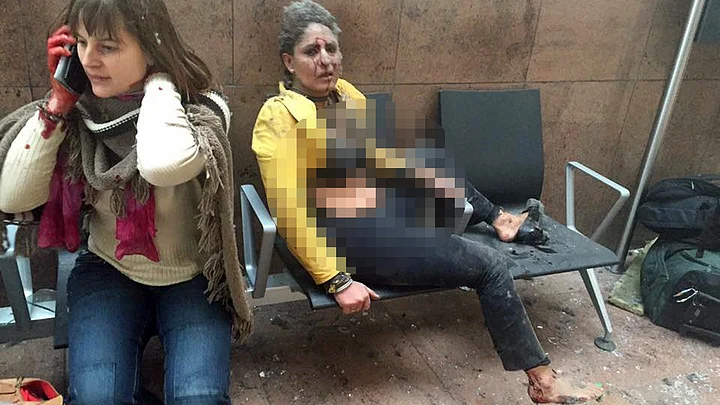Nidhi Chaphekar says she could not recognise herself when she saw a photo of herself sitting on a chair, her clothes torn, hair caked with soot and blood streaking down her face after the 22 March Brussels attack.
Chapekhar, the 42-year-old Jet Airways flight in-charge sustained severe burn injuries and fractures following twin blasts at the Zaventem Airport in Brussels. Her photo immediately after the attack became one of the defining images of the terrorist attack.
Recounting Memories of the Attack
Recounting the day of the attack in an interview with News18, Chapekhar said:
I was shocked to see my photo. It was after looking at the photo that my husband came to know that I was in the attack. I could not believe it that it was me in the photo. It showed all aspects except that of life.
The photo ignited a debate over photography ethics, with people discussing whether photos like these strip a survivor of their dignity and agency.
When asked if she would have given permission to print the photo, she replied in the affirmative.
Yes I would have given permission. It shows how helpless a person can be in a situation like this.
‘I Told Myself I have to Survive’
Narrating the series of events of the ill-fated day, a teary, visibly emotional Chaphekar, still reeling from the horrors of the day, said that she could only think about her children when she realised what was happening to her.
When I first heard the explosion, I thought the ceiling had fallen. But when I realised what was happening, when I heard the boom and smoke I wanted to go and help but my colleague stopped me and then there was chaos. Then there was another explosion and I was thrown away and I fainted.Nidhi Chaphekar to News18
When asked about the details of the day, she added that every time she thinks about it, memories of the cries, people howling and frantically looking for each other come back to her.
Remembering the graphic details and tearing up at the memory of them, Chaphekar said that a voice inside her told her to get up and move away to safety.
I told myself I have to survive. I saw people with torn limbs and severe injuries. I told myself I have to get up and go. I saw chunks of flesh all over and I wanted to move but a piece of metal had pierced my leg.
‘People Have to be Taught to Love’
Chaphekar believes the attack has made her rethink elementary questions about life.
Who did this? Are they even human beings? Man is his worst enemy. I believe rather than provoking each other, turn the person’s thinking around. Revenge cannot be the answer. Teach the person love. Human beings should be messiahs of kindness. People have to be taught to love.
She also poignantly recalls the moment she was told that her face was severely burnt and that it would never look the same again.
When I saw my photo, I felt the blast was on my face. At the hospital when I was told my face was totally burnt, the first thing that came to mind was how will I do my job? Will my kids accept me? I told the nurse that I don’t want to live anymore.
‘My Children Saw My Strength in the Photograph’
In another interview with BBC, Chaphekar said she was concerned about her children and their reaction after looking at the photo.
I was worried that my children seeing their mother in half covered clothes might be ashamed, you know, seeing that she is exposed to the world. But when they looked at it, they said, that we could only see your strength and that your eyes were still open, that you still wanted to be alive.
She further added that after all that she experienced, she thinks, life has to go on.
We have to live. We have to move on, life has to go on. And if you can do better for somebody else, that’s good, that’s it.
(At The Quint, we question everything. Play an active role in shaping our journalism by becoming a member today.)
